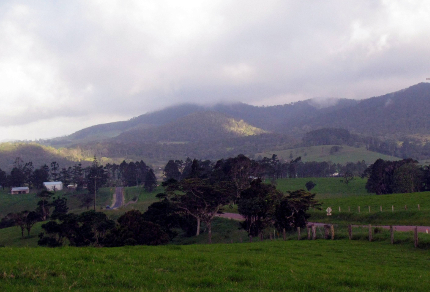Morning light lured me beyond the house walls, as though inviting me to dance with the dawn. I strode quickly to Bicentennial Park, spotting a sacred kingfisher sunning on a wire. Within the park, a male red-backed fairy-wren flaunted his dark chocolate plumage and scarlet saddle in a dense stand of tall, riverside grasses. A varied triller hopped and fluttered among the branches of a poinciana, its eye-catching dark grey and white patterns hooking me like a fish. I have walked that same path a hundred times or more by now, yet still it offers me sightings of new species. In the Ross River, a large fish leapt from the serene water and returned to its liquid home with a loud splash, echoing the sense of celebration I felt in a glorious, tropical autumn morn.
In early afternoon, after once again packing the tent and sleeping bags, Vilis, Janis, and I headed north from Townsville, our destination a campground near Ravenshoe in the Atherton Tablelands. We would spend tomorrow exploring Crater Lakes National Park, and Monday hiking in the Misty Mountains.
North of Paluma, the Bruce Highway led us over a coastal plain blocked into fields of thick, tall sugarcane disrupted by conical, forested hills. The cane crowded in close to houses and yards, often walling them off from all but the highway.
Near Cardwell, we paused at a rainforest-backed lookout to size up Hinchinbrook Island, a nearly 40-kilometre-long range of forested peaks that lay dark and brooding offshore. Home to the Thorsborne Trail – the most famous backpacking track in Queensland’s Wet Tropics World Heritage Area – that island is on our list of tropical destinations to explore.
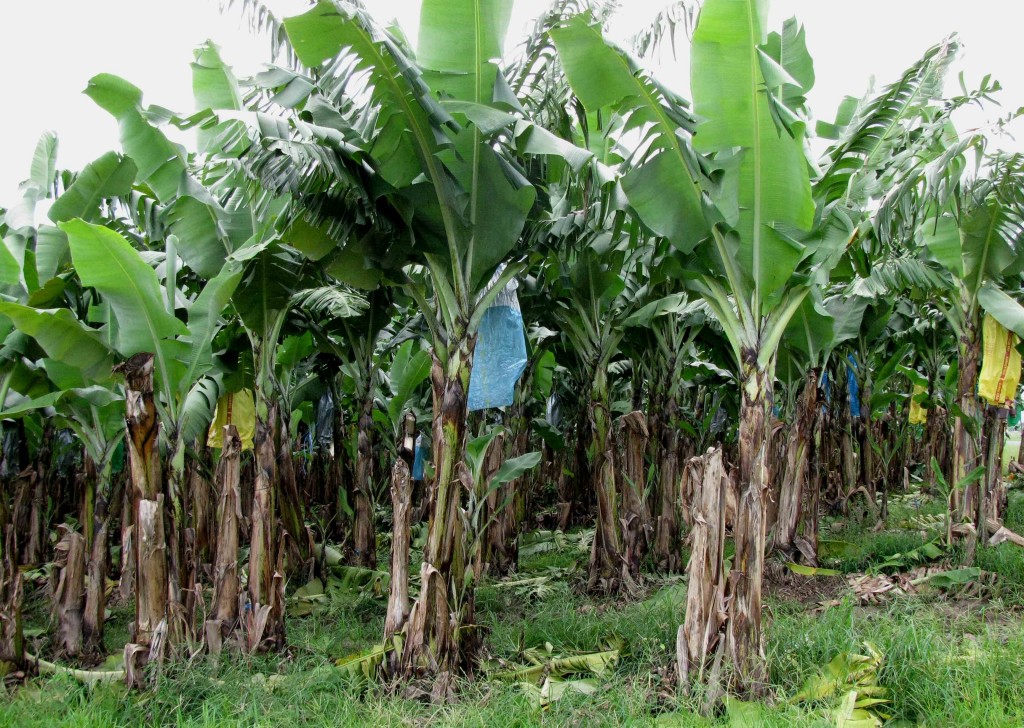
Banana Plantation (© Vilis Nams)
From the lookout, the highway carried us down through vine-hung rainforest into open woodland interspersed with pine and eucalypt plantations, and then into more cane. Beyond Tully – the wettest town in Australia – sugarcane and banana plantations ruled the landscape. This was our first view of banana plantations, with their straight rows of banana plants topped by flaring, bright green leaves. Large plastic bags open at the bottom enclosed the clusters of fruits, causing us to wonder at their function. Did they encourage ripening? Protect the fruits from birds? Water lay at the roadsides and among the banana trees, and warning signs posted surprisingly frequently along the highway cautioned that the road was subject to flooding. We had definitely made the jump from the dry tropics of Townsville to the wet tropics of Far North Queensland.
At Innisfail, about 250 kilometres north of Townsville, we headed west on the Palmerston Highway, climbing through vivid green pastures toward the Atherton Tablelands. Patches of rainforest interspersed with the grazing land created a striking dichotomy of vegetation types and gave us a glimpse of the dense, rain-fed forests European colonists had felled to create lush pastures for dairy and beef herds. Cassowary crossing signs adorned the roadside, and in the protected rainforest of Wooroonooran National Park, rope ladders and tubes hung between rainforest on both sides of the highway, offering safe crossings for arboreal mammals like possums and endangered Lumholtz’s tree kangaroos.
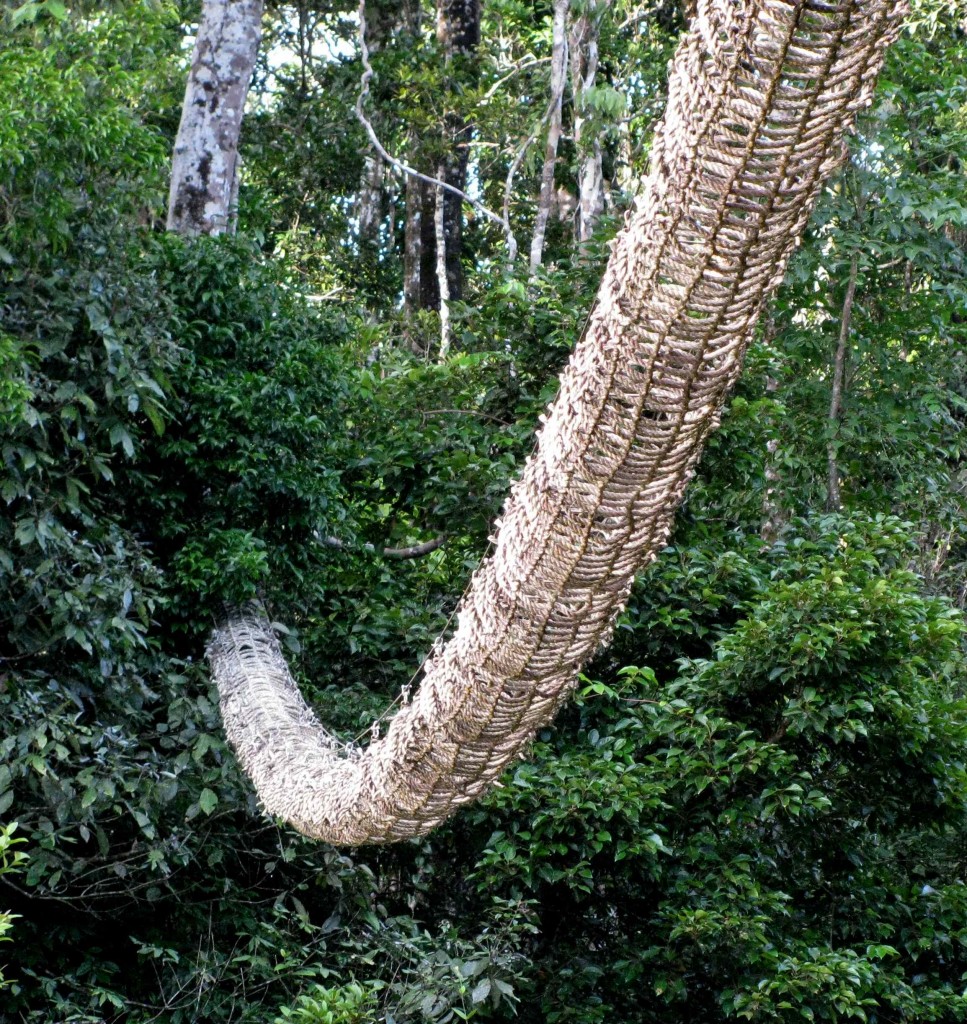
Highway Crossing Tube for Arboreal Mammals (© Vilis Nams)
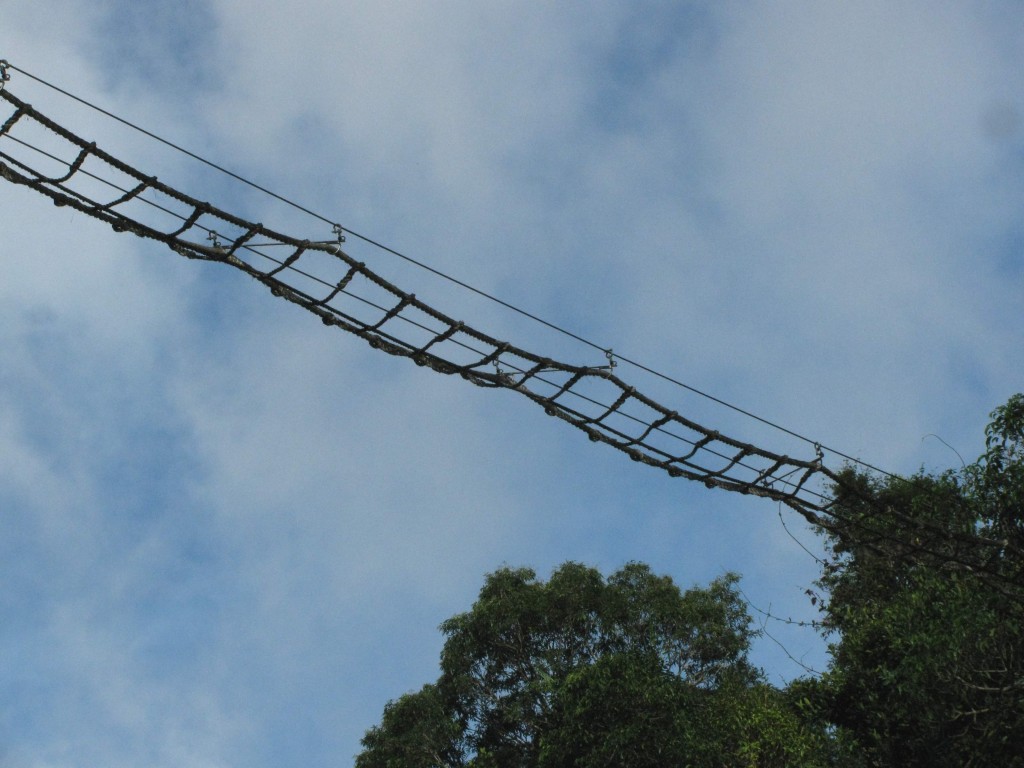
Highway Crossing Ladder for Arboreal Mammals (©Vilis Nams)
Beyond the park, smaller cane and banana plantations, as well as fields of papayas plus a tea plantation, added variety to the rich grazing lands that swept over long ridges and steep-sloped ravines like thick emerald carpets.
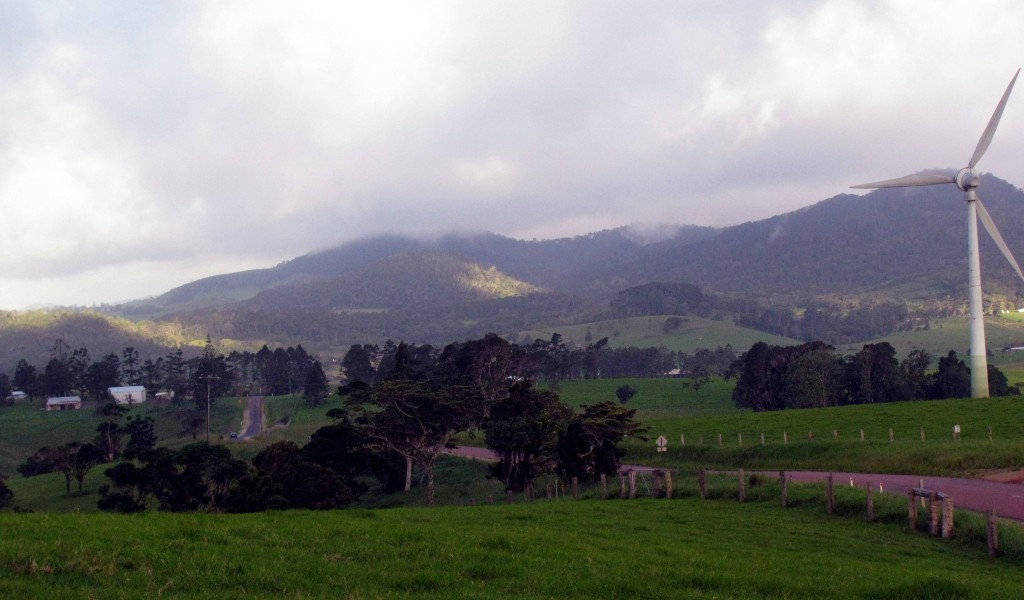
Windy Hill, Atherton Tablelands (© Vilis Nams)
At the top of the climb, the vast panorama of the rolling Atherton Tablelands greeted us. Small hills were caught in cloud and sun – some lush pasture, others forested. Ranges of peaks misted with fast-moving cloud thrust up from the tableland, looking wild and darkly mysterious beyond placid herds of dairy cattle. Near Ravenshoe, 20 turbines on Windy Hill sang wind songs while rotating massive blades in the fierce wind blasting over the hill. As we drove past the turbines, with clouds streaming behind them, they looked as though they were cartwheeling across the green pastures.
The town of Ravenshoe boasted Queensland’s Highest Pub, the Hotel Tully Falls. Vilis entered the pub to inquire as to the location of our campground and came out smiling. Through the open doorway, Janis and I could see a few laughing cowboys bellied up to the bar. Vilis told us that he liked that hotel, that it had a real country feel, and that he’d seen a sign stating ‘Everyone needs to believe in something. I believe I’ll have another beer.’
With dusk settling in around us, we set up camp at Tall Timbers, which possessed an intriguing assortment of accommodation possibilities that included a few motel rooms, a grassy slope that was the tenting area, a few powered sites, and a half dozen cabins attached to caravans. The whole place had a seedy, run-down look about it, as though big plans had gone sour. Vilis told Janis and me that the reality looked very different from the images he’d seen on the website. Making the best of a less-than-appealing situation, we pitched the tent near a two-metre poinsettia shrub and split-leaved philodendrons that climbed ten metres into shade trees. Wind whipped through the tree canopies, and mist drifted down onto us like a cold caress as we squeezed into the tent for the night.
Today’s birds: magpie-larks, rainbow lorikeets, mynas, rock doves, blue-faced honeyeaters, *sacred kingfisher, rainbow bee-eaters, green figbird, red-backed fairy-wren, nutmeg mannikins, sulphur-crested cockatoos, *varied triller, black-faced cuckoo-shrike, yellow-throated miners, purple swamphen at campground. (*denotes lifelist sighting)

